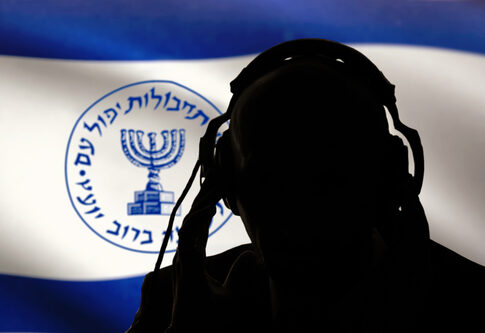The way this whistleblower came out makes one wonder how friendly America’s intelligence is to its allies. Former NSA translator Bruce Brill’s explosive claims about US intelligence misleading Israel raise serious concerns about the nature of intelligence sharing and trust among allies. He claims that the United States knew about the 1973 Yom Kippur War but misled Israel.
Unveiling the “Jew Rooms”
Bruce Brill, a former National Security Agency (NSA) translator, has made startling claims about the existence of “Jew Rooms,” or secret divisions within US intelligence agencies. Brill claims that these divisions acted against Israel’s interests and were aware of an impending Arab attack on Israel during the 1973 Yom Kippur War.
Brill’s allegations stem from his work as an Arabic translator for the NSA. His intelligence career began during the Vietnam War, when he worked for the United States Army intelligence before joining the NSA. Brill’s roommate confirmed the claims about the “Jew Rooms,” revealing the existence of rooms in both the CIA and the NSA that Brill, as a Jewish person, was not allowed to enter.
Read this perspective in this op-ed by an independent journalist and former US National Security Agency Middle East analyst on why Israel's October 7 intelligence failure happened. https://t.co/PGibD7nOgc
— The Jerusalem Post (@Jerusalem_Post) June 29, 2024
Historical Patterns of Deception
Brill’s assertions go beyond mere speculation. He claims that a CIA division intentionally misled Israel about the 1973 Yom Kippur War, assuring them that there would be no attack despite having contrary information. Israeli General Eli Zeira later confirmed this allegation during a conversation with Brill, contradicting Ray Cline’s official narrative to the Pike Commission.
“As a former translator for the National Security Agency, I discovered the U.S. intelligence agencies had secret divisions called “Jew Rooms” working against Israel and knew in advance that the Arab nations would attack Israel on Yom Kippur 1973.” – Bruce Brill
Declassified documents and reports have since emerged, lending credibility to Brill’s claims about misleading intelligence prior to the Yom Kippur War. These revelations raise serious concerns about the nature of intelligence sharing among allies and the possibility of betrayal at the highest levels of national security.
Read this perspective in this op-ed by an independent journalist and former US National Security Agency Middle East analyst on why Israel's October 7 intelligence failure happened.https://t.co/PGibD7om5K
— The Jerusalem Post (@Jerusalem_Post) June 29, 2024
Parallels to Recent Events
The similarities between the 197ľl3 Yom Kippur attack and the October 7, 2023, Hamas attacks are striking. Both occurred on Jewish holidays, catching Israel off guard. Brill suggests that the “Jew Room” might still be operational and possibly played a role in misleading Israeli intelligence about the recent Hamas attack.
According to reports, Israeli intelligence warned about the Hamas attack, but they were ignored. Furthermore, US intelligence allegedly had assessments warning of increased Hamas threats prior to the October 7 attack. These circumstances mirror the pattern of ignored warnings and potential deception described by Brill during the 1973 conflict.
Implications for U.S.-Israel Relations
The allegations of U.S. intelligence leaks that endangered Israel, including the disclosure of Mossad agents’ names and plans for strikes on Iran, further complicate the picture of U.S.-Israel intelligence cooperation. These claims, if true, represent significant breaches of trust between the two nations.
Brill’s book, “Deceit of an Ally,” details his experiences and claims regarding military anti-Semitism and intelligence treachery. The existence of the “Jew Rooms” is confirmed by John Loftus in his book “The Secret War Against the Jews,” lending credence to Brill’s claims.
Sources:

